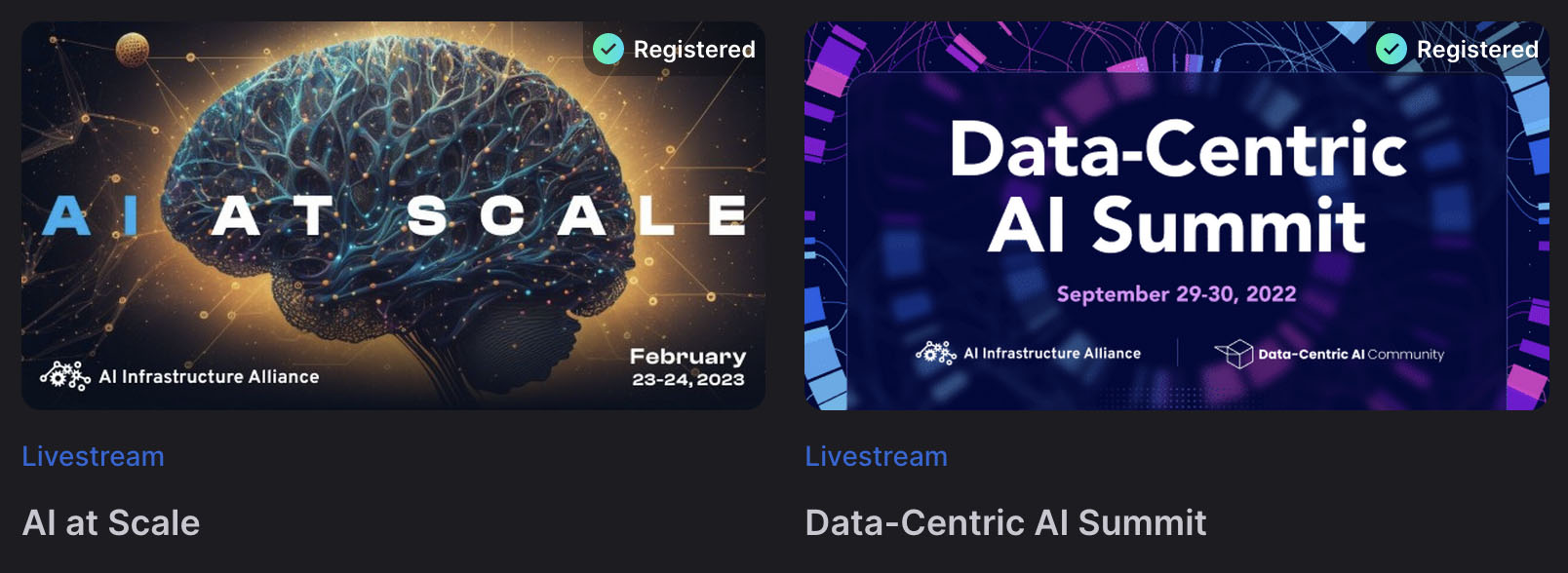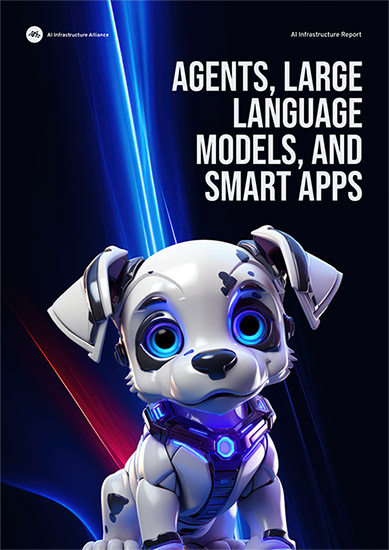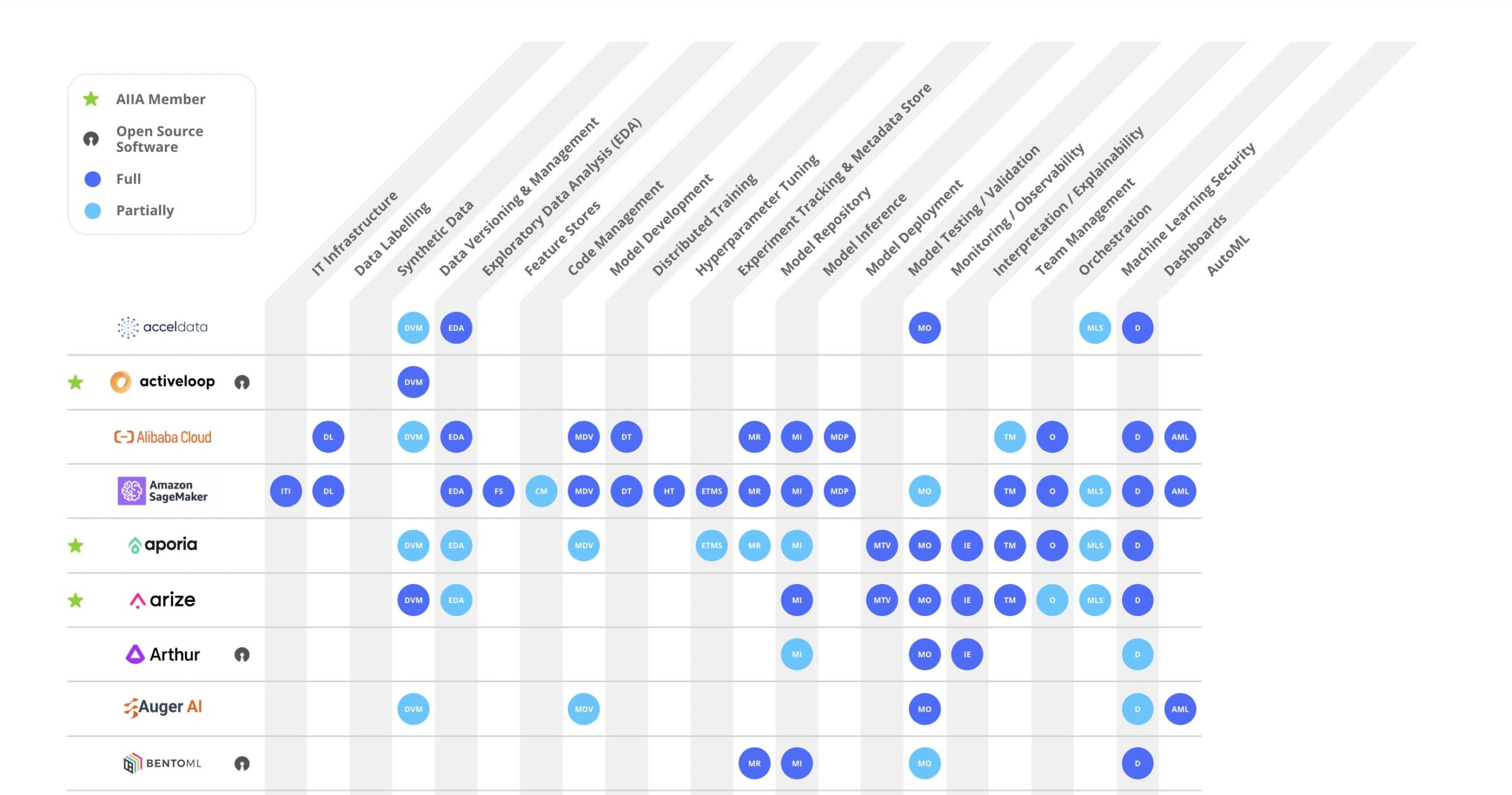AI INFRASTRUCTURE ALLIANCE
Building the Canonical Stack for Machine Learning


Our Work
At the AI Infrastructure Alliance, we’re dedicated to bringing together the essential building blocks for the Artificial Intelligence applications of today and tomorrow.
Right now, we’re seeing the evolution of a Canonical Stack (CS) for machine learning. It’s coming together through the efforts of many different people, projects and organizations. No one group can do it alone. That’s why we’ve created the Alliance to act as a focal point that brings together many different groups in one place.
The Alliance and its members bring striking clarity to this quickly developing field by highlighting the strongest platforms and showing how different components of a complete enterprise machine learning stack can and should interoperate. We deliver essential reports and research, virtual events packed with fantastic speakers and visual graphics that make sense of an ever-changing landscape.
Download the Enterprise Generative AI Adoption Report
Oct 2023
Our biggest report of the year covers the wide world of agents, large language models and smart apps. This massive guide dives deep into the next-gen emerging stack of AI, prompt engineering, open source and closed source generative models, common app design patterns, legal challenges, LLM logic and reasoning and more.
Get it now. FREE.
AI Landscape
Check out our constantly updated AI Landscape Graphic that shows the full range of capabilities for major MLOps tools instead of just pigeonholing them into a single box that highlights only one aspect of their primary characteristics.
Today’s MLOps tooling offers a broad sweep of possibilities for data engineering and data science teams. You can’t easily see those capabilities in typical graphics that show a bunch of logos so we’ve engineered a better info-graphic to let you quickly figure out if a tool does what you need now.
Events – Past and Future
Check here for our upcoming events and to watch videos from past events. We put on 3 to 4 major events every year and they’re packed with fantastic speakers from across the AI/ML ecosystem.

MEMBERS
ARTICLES
A Data Scientist’s Guide to Identify and Resolve Data Quality Issues
Doing this early for your next project will save you weeks of effort and stress If you've worked in the AI industry with real-world data, you’d understand the pain. No matter how streamlined the data collection process is, the data we’re about to model is always...
How To: Monitoring NLP Models in Production
Today, Natural Language Processing (NLP) models are one of the most popular usages of machine learning, with a wide variety of use cases. In fact, it’s projected that by 2025, revenue from NLP models will reach up to $43 billion along with AI in general. What is...
What Are Feature Stores and Why Are They Critical for Scaling Data Science?
The field of MLOps has grown up around the reality that while the theoretical ability of machine learning to make accurate predictions and solve complex problems is incredibly sophisticated, actually operationalizing machine learning is still a major blocker for most...
What’s in a name: URI generation and unique names for objects
Fixing linked-data pain-points by bridging RDF and RDBMS ID generation In TerminusDB we have both an automatic and manual means of describing the reference of a document in our graph. We have tried to make these as simple as possible to work with, based on our...
Best Practices In ML Observability for Customer Lifetime Value (LTV) Models
The age-old saying still holds: the customer is always right, but some are more right than others (that’s the saying, right?). While there are many metrics to estimate the value of a customer within any organization, customer lifetime value (LTV) is an important one...
How to be more confident making data model changes
For the better part of this year, we’ve been conducting interviews with data teams to help us better understand their data reliability needs, and one issue we keep hearing is about confidence. Here are a couple of points that often come up: Data teams want to be...
Connect with Us
Follow US










